AME BC honoured its 2013 award recipients on January 29 at Mineral Exploration Roundup 2014. Every January, the Association celebrates the important achievements made by leaders in the mineral exploration development community: in B.C., throughout Canada and internationally.
H.H. “Spud” Huestis Award
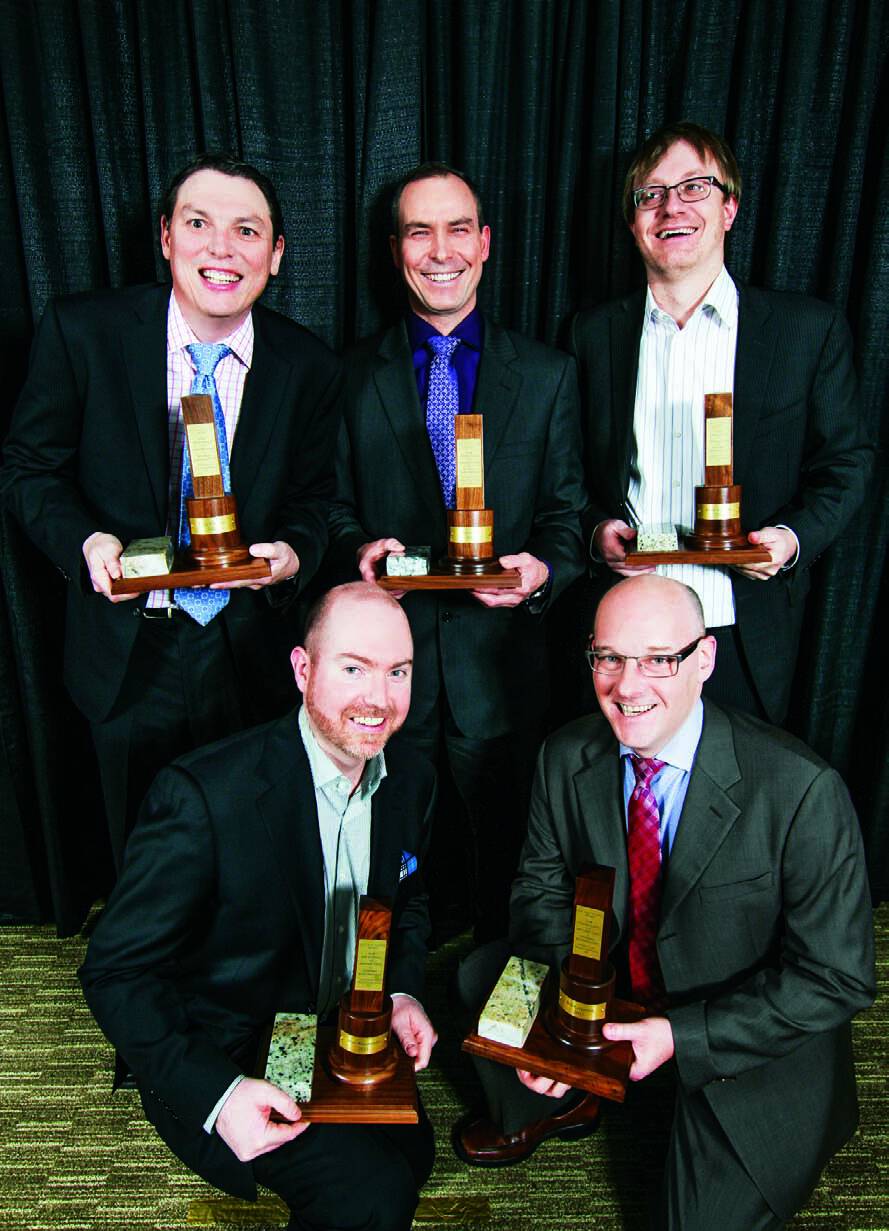
Excellence in Prospecting and Mineral Exploration
Recipients: Rob Carpenter, Craig Finnigan, Adam Simmons, Tim Smith and Alan Wainwright
Rob Carpenter, Craig Finnigan , Adam Simmons , Tim Smith and Alan Wainwright were the recipients of the 2013 H.H. “Spud” Huestis Award for excellence in prospecting and mineral exploration. They are recognized for their role in Kaminak Gold Corporation’s exploration and development of the Coffee gold project.
The 100 per cent owned Coffee gold project lies within the emerging White Gold District of west-central Yukon. In June 2009, Rob Carpenter and Craig Finnigan reviewed the early property data with its attractive gold-pathfinder element geochemical anomalies; based on these observations, they recognized the favourable exploration potential for major gold occurrences. This assessment prompted the acquisition of the key claims by way of an option agreement with Yukon prospector Shawn Ryan. The project has since expanded by staking to cover approximately 600 square kilometres.
Under the leadership of president and CEO Rob Carpenter, Kaminak raised and invested $77 million in an aggressive exploration program from 2009 to 2012. The dedicated Kaminak team systematically co-ordinated the early-stage soil geochemical sampling, excavator trenching and geophysical surveys with the objective of identifying and defining drill targets in advance of initiating drill programs. The drilling programs commencing in 2010 were well planned. The first discovery of gold mineralization was made in the carefully selected first drill site with an exciting intersection of 17.1 grams/ton Au over 15.5 metres. Following this discovery, 302 diamond drill holes totalling 72,000 metres and 369 reverse-circulation holes totalling 59,000 metres have been completed to the end of 2012. Sixteen zones of mineralization have been identified along an aggregate eight-kilometre strike length.
Recognizing the significance of the project, Kaminak instituted a comprehensive best management practices procedure in 2010 that guided exploration activities to minimize environmental impact. Baseline environmental and archeological studies were initiated at an early stage, incorporating ongoing dialogue with the Tr’ondëk Hwëch’in First Nation, leading to the signing of an exploration co-operation agreement in May 2013.
In order to permit the increased exploration activities, a five-year mining land-use permit was obtained in 2011 that included provisions for an 80-person camp, a 40-kilometre access road, temporary trails to allow improved access to the property, and surface drilling and exploration activities. This careful planning of infrastructure has allowed Kaminak to consistently be the first in the field and the last out to town every year.
The rapid exploration progress was benchmarked with a December 2012 NI 43-101–compliant initial resource, for four of the 16 mineralized zones, of 3.2 million ounces gold in the inferred category at 1.6 grams/ton Au grade, including 1.4 million ounces gold in near-surface oxide zones and an additional 1.4 million ounces gold in deeper transition zones. Preliminary metallurgical tests carried out in 2012 confirmed good gold recoveries by simulated heap leach testing of oxide and transitional material.
Carpenter and the Kaminak team are to be congratulated for their vision, perseverance and technical expertise that have enabled the remarkably rapid but systematic delineation of one of the few recent greenfield gold discoveries in Western Canada.
E.A. Scholz Award

Excellence in Mine Development
Recipients: Peter Holbek and Rod Shier
Peter Holbek and Rod Shier, Copper Mountain Mining Corporation’s vicepresident of exploration and chief financial officer, respectively, were the recipients of the 2013 E.A. Scholz Award for excellence in mine development. They are being acknowledged for their leadership in bringing the Copper Mountain mine back into production after a long hiatus. They recognized the geological potential of the deposit, arranged the financing for the exploration and mine development, established the necessary ore reserves, and stayed the course during difficult financial times.
Copper Mountain is an open pit copper-gold mine located near Princeton, B.C. It reopened in 2011 with a measured and indicated resource of approximately 2.7 billion pounds of copper.
Holbek conceived and completed a series of exploration programs to test his plan for connecting the existing three pits to create one super pit. His knowledge of the deposit’s characteristics and potential provided the confidence required during the early stages of the project and led directly to positive drilling results right from the start. Peter did not hesitate to use innovative exploration techniques, including the Titan 24 deep- penetration geophysics system. Under his direction, the deposit grew from a historical resource of 93 million tonnes grading 0.42 per cent Cu to a measured and indicated resource of 327 million tonnes grading 0.37 per cent Cu. Holbek also played a key role in addressing the economic viability of the deposit every step of the way.
Shier was a founder and key team member in forming Copper Mountain Mining Corporation. He was instrumental in arranging all the financing critical to funding the exploration and mine development. Rod raised well over $500 million in both equity and debt for the mine. This financing included arranging a complicated and unique deal as part of a strategic alliance with Mitsubishi Materials Corporation, one of the world’s largest diversified materials companies, at a time when financial markets were deteriorating and conventional bank debt was unavailable.
The passion, dedication and hard work that both Holbek and Shier demonstrated on a daily basis over six years were critical to the transition of Copper Mountain Mining Corporation from a small private exploration company to a resource company with a successful major mine.
Murray Pezim Award
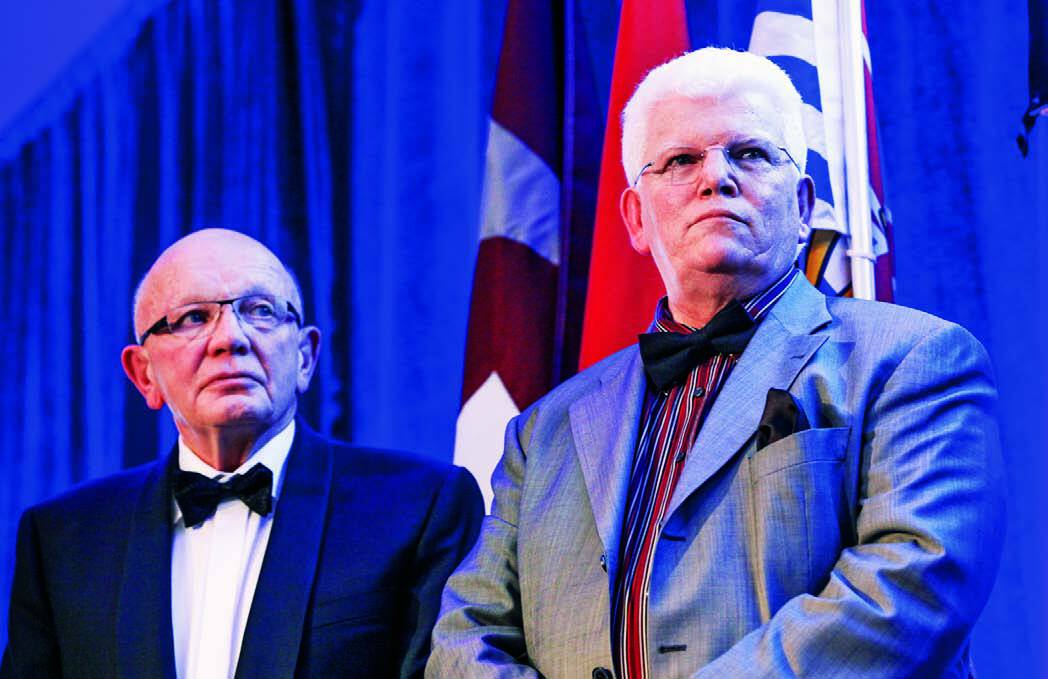
Perseverance and Success in Financing Mineral Exploration
Recipient: Richard Barclay and Michael Beley
Richard Barclay and Michael Beley were co-recipients of the 2013 Murray Pezim Award for perseverance and success in financing mineral exploration. This award is in recognition of this pair’s exceptional partnership that started in 1974 with the combination of their respective companies, Bear-X and Manex Mining, to form Bema Industries. Bema was a highly regarded geological consulting firm in its own right, but was only a precursor to what this pair would accomplish over the next 40 years in helping launch Bema Gold, Eldorado Gold and Adriana Resources, as well as other junior companies.
Beley obtained a B.Sc. in Geology from UBC in 1965, whereas Barclay gained his experience prospecting and running field crews in the bush. Beley had the technical acumen and was the negotiator, communicator and salesman for the pair, while Barclay was the quiet partner who made sure projects were executed well and who supported Beley with his keen business and financial skills.
In 1988, they amalgamated three companies and started their first mining project, a small heap leach gold-silver operation in Idaho that taught the two how to finance and operate a mining company. This launched Bema Gold, which, under the direction of one of their first employees, Clive Johnson, experienced steady growth. It was eventually taken over by Kinross for $3.3 billion in 2007.
Meanwhile, Beley and Barclay co-founded Eldorado Gold with Gary Nordin, initially producing gold from small heap leach operations in Mexico. They added mining assets in Brazil and Turkey and, following the strategy they used with Bema Gold, added a prudent CEO in Paul Wright, who guided Eldorado into an intermediate gold producer with a market capitalization approaching $5 billion.
In more recent ventures, Barclay and Beley founded and financed Adriana Resources to develop a large iron ore deposit in the Labrador Trough of Quebec, now in joint venture with WISCO, China’s third largest steel company.
Their remarkable career is based on an unshakable partnership and a family-like corporate culture that attracted loyalty, positive thinking and measured risk-taking to incubate not one but three very successful mining companies. Based on their career-long record of nurturing and developing mining companies, these two individuals exemplify the entrepreneurial attributes of the award’s namesake.
Hugo Dummett Diamond Award
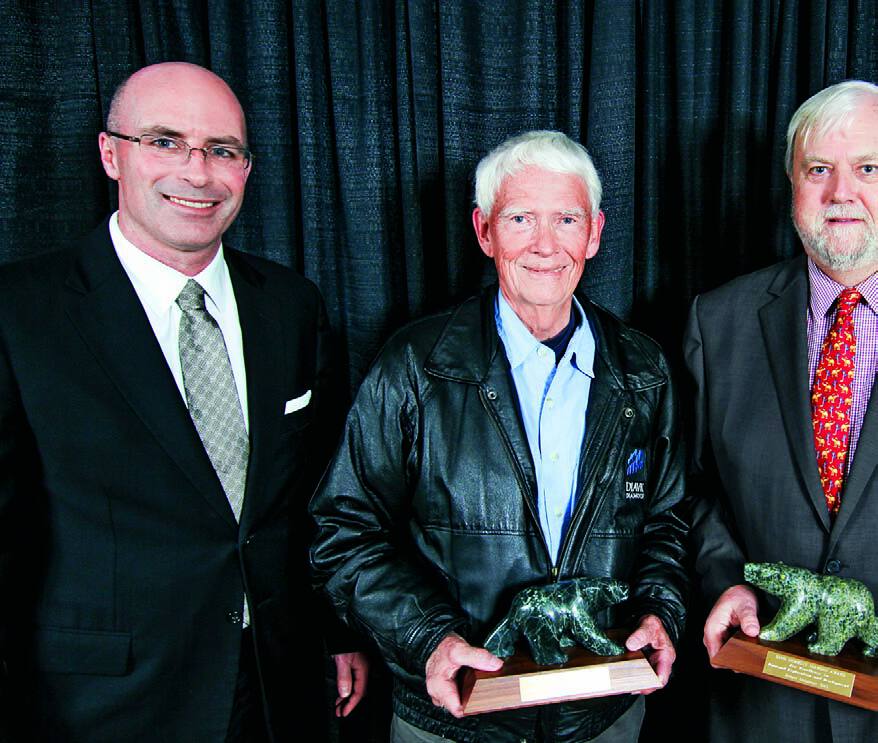
Excellence in Diamond Exploration and Development
Recipients: Rod Davey, Stephen Prest and Robert Gannicott
Rod Davey, Stephen Prest and Robert Gannicott were the recipients of the 2013 Hugo Dummett Diamond Award, which honours those who have made a significant contribution to diamond exploration, discovery or mine development. They are being acknowledged for the key roles they played in the successful development of the Diavik Diamond Mine in the Northwest Territories, this country’s largest producer of diamonds. Since the inception of the Hugo Dummett Diamond Award in 2004, all of the recipients have been recognized for their accomplishments in either diamond exploration or diamond geology; this is the first team to be recognized for excellence in diamond mine development.
Technical challenges abound in the North, and building world-class mines in this higher-cost environment takes courage and faith. Building the Diavik mine was not an inconsequential investment at the time, costing $1.3 billion to achieve initial production. That investment has expanded since then through the construction of an additional water-retention dike and the subsequent transition to what is now an all-underground mining operation.
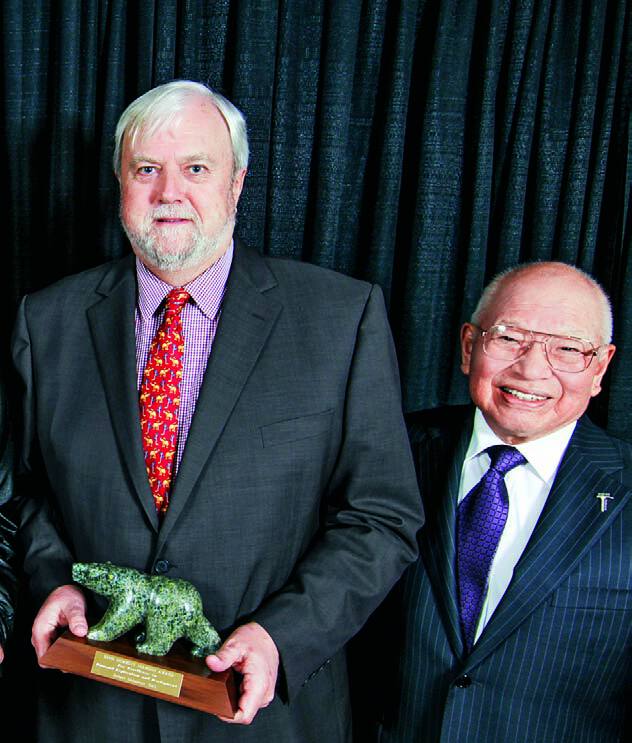
An equally daunting challenge facing mining projects today is acquiring a social license to operate and, as the second diamond mine to be proposed in the Northwest Territories, Diavik had an exceptionally difficult task. The project leaders built a local team with a local focus, and – in addition to committing to the highest levels of local aboriginal employment – Diavik took innovative steps to use the mine as a foundation for many new aboriginal businesses.
In 1996, Rio Tinto nominated Rod Davey to be the first president of Diavik Diamond Mines Inc. Davey launched the Diavik project onto a solid path of development, building a fine team of national and international mining, engineering and processing experts. Under Davey’s direction, the engineers travelled the globe to learn about dikes, and, in the end, proposed a completely new and untried design. He took a new step to build a local team to advance community relations and community participation. Davey met with aboriginal elders, youth and leadership alike, and there are many in the communities who speak fondly of him.
Dr. Stephen Prest replaced Davey upon his retirement, and became Diavik’s second president in 1999. His most immediate and formidable task was to see the project through the final, crucial stages of permitting in order to get a construction decision, then to translate all of Diavik’s complex engineering and innovative community plans into action. With the help of seasoned and accomplished construction and engineering managers and consultants, as well as his local communities team, Prest saw Diavik come into production in early 2003, under budget and several months ahead of schedule.
Robert Gannicott led Aber Resources, the 40 per cent partner in the Diavik mine project who staked the Diavik claims in 1992 and launched the original exploration programs shortly thereafter. Aber had to fund its 40 per cent interest if it wanted to retain its interest in whatever might emerge. As a junior exploration company, Aber was challenged to continually market itself as an exciting and potentially lucrative investment to raise the funding required to meet that commitment. Under Gannicott’s leadership, Aber was positioned as a uniquely attractive investment – one that had a committed and accomplished multinational mining partner, and, in a stroke of genius, a deal that guaranteed Aber would also receive 40 per cent of all the rough diamonds the mine would produce. This right to rough diamonds rather than cash profits gave Aber a unique position as a diamond seller and future player in the diamond business.
Colin Spence Award

Excellence in Global Mineral Exploration
Recipients: Ben and Garrett Ainsworth
The father-and-son team of Ben and Garrett Ainsworth received the 2013 Colin Spence Award for excellence in global mineral exploration. Collectively, they are recognized for their respective roles and efforts that ultimately led to the discovery of a high-grade uranium mineralized system at the Patterson Lake South (PLS) project in Saskatchewan.
At various stages, the PLS project has been operated by ESO Uranium Corp., Alpha Minerals Inc., and Fission Uranium Corp. Ongoing exploration work has confirmed continuity of the initial zone and has identified five additional zones along an approximate 1.2-kilometre trend that is open for potential expansion.
PLS is a classic discovery story: Ben and Garrett were instrumental in advancing an idea in 2007 that eventually led to the discovery of a mineralized boulder train and to the spectacular intersection of pitchblende in drill holes in 2012. Garrett Ainsworth, who was vice president of exploration for Alpha Minerals, worked as PLS project manager for Fission, under the supervision of Ray Ashley and Ross McElroy, during the 2012 season when the discovery hole was made.
While early-stage exploration work began in the late 1960s in the Athabasca Basin, the idea that uranium could be found in the Patterson Lake area, which was largely an overlooked part of the Basin, was spawned from old-fashioned desktop research where Garrett recognized the potential significance of radon anomalies and “exotic boulders” in a government report. With this knowledge they staked the land in 2007, and early work resulted in the discovery of a uranium-bearing boulder field. Follow-up ice flow studies indicated that the possible source of boulders could be located along an east-northeast directional trend. Although the first 20 drill holes were not successful, this did not deter the exploration team. Ben and Garrett’s application of alteration studies in conjunction with geochemistry and geophysics was instrumental in vectoring and defining the target where the initial discovery was made. Garrett was the project manager; however, it was Ben’s guidance, wisdom and expertise that were the foundations for researching, planning and co-ordinating the systematically organized exploration programs. Ben’s belief in the project is evident through a personal loan he made to Alpha prior to the initial discovery in order for the company to survive and retain its interest in the project with Fission.
Ben obtained his B.Sc. from Oxford University. He would later work for the Ghana Geological Survey before joining Placer Development in Vancouver in 1965. After over 20 years with Placer, Ben started his own consultancy where he worked on numerous projects globally. In 2005, he joined Alpha (at the time ESO Uranium) and later became president and CEO.
Garrett obtained his B.Sc. from Birkbeck, University of London, and later became project manager and VP exploration for Alpha Minerals. During his time at Alpha, he oversaw all aspects of the exploration at PLS. Prior to Alpha, Garrett worked on numerous gold and diamond projects in North America and West Africa, in addition to working as an environmental consultant from 2002 to 2007.
Today, the Patterson Lake South project in northern Saskatchewan continues to shape up to be one of Canada’s most important mineral discoveries!
David Barr Award
Excellence in Leadership and Innovation in Mineral Exploration Health and Safety
Recipient: Boart Longyear
Boart Longyear was the 2013 recipient of the David Barr Award for excellence in leadership and innovation in mineral exploration health and safety. Boart Longyear is recognized as a pioneer of innovation in health and safety. In particular, the company shows leadership in recognizing safety issues, addressing them, and seeing substantially increased performances in health and safety as a result.
Boart Longyear’s expertise in hazard identification, mitigation and engineering innovation dates back 120 years. Within the past five years, however, the company has excelled in providing novel engineering solutions that have led to reduced injury rates in mineral exploration. One example of Boart Longyear’s leadership is its approach to finger injuries, which had been a major cause of incidents in mineral exploration. Boart Longyear completed a study of finger injuries and realized that the company needed to eliminate manual rod handling. In 2012, the company introduced the industry’s first hands-free rodhandling system, leading to a dramatic reduction in injury rate and severity. Other innovations over the past five years that have led to a reduction of injuries include a safety bypass valve, all- encompassing guarding with interlock, split tube lifter and rod lifter.
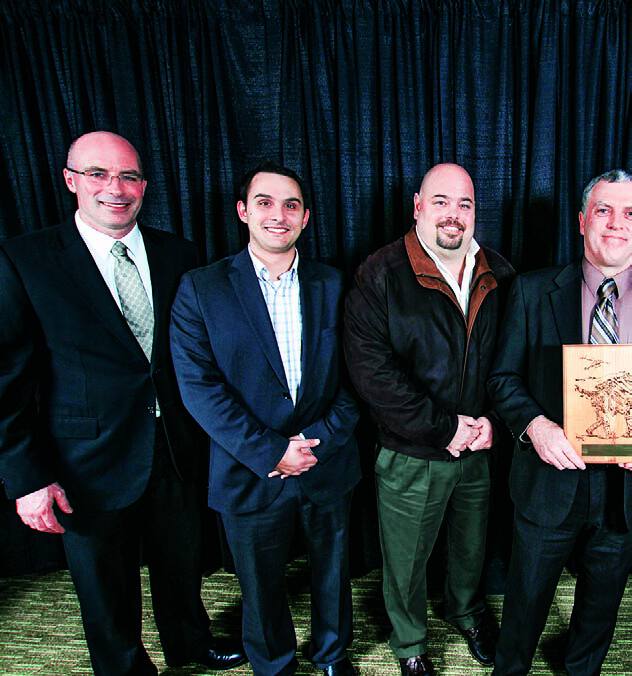
Boart Longyear’s commitment to health and safety is also demonstrated by the prominence of health and safety on its website, including transparent publishing of the company’s health and safety record, which is second to none in the industry. The company also reports on its drill work hazards with incident frequency. As well, it demonstrates a clear commitment to zero injuries, occupational illnesses and environmental incidents backed up by action: a dedication to a high level of certification backed by ISO 18001 and ISO 14001 for all global operations and independent auditing of its environment, health and safety performance.
Although many drilling companies are taking health and safety much more seriously than in the past, Boart Longyear has taken a pioneer role in innovation for the mineral exploration and development industry in addition to making an unwavering commitment to health and safety.
Robert R. Hedley Award
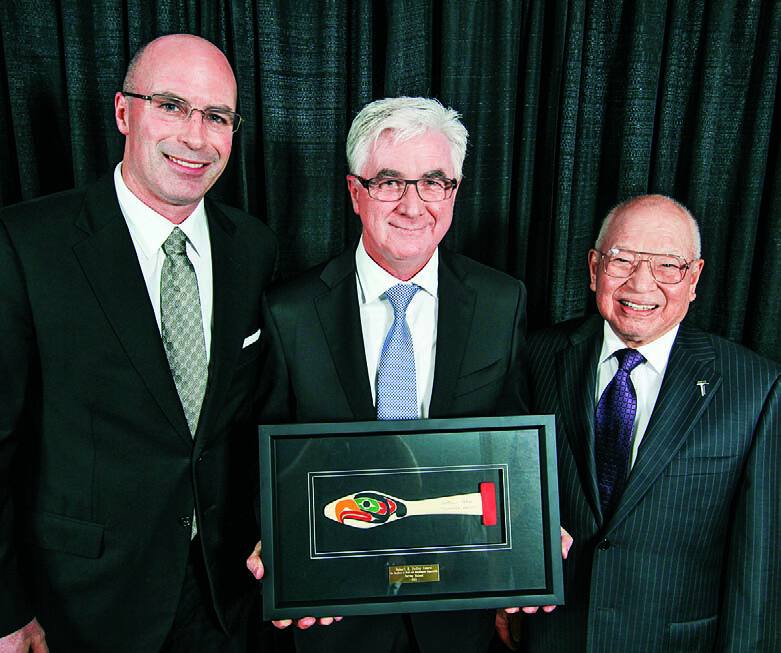
Excellence in Social and Environmental Responsibility
Recipient: Harvey McLeod
Harvey McLeod of Klohn Crippen Berger was the recipient of the 2013 Robert R. Hedley Award for excellence in social and environmental responsibility. Both an engineer and geoscientist, McLeod has been a leader in the evolution and development of mine waste management practices. In addition to the expertise he has developed in the scientific and engineering aspects of mine waste, McLeod has been a leader in integrating socio-environmental responsibility with the engineered aspects of tailings and waste rock. In the 1980s, McLeod recognized mine waste as the most enduring consequence of mine development and, over the years, his guiding approach has been his vision of how projects will exist after mine closure. His passion has been to ensure tailings and mine waste practices keep pace with the values of sustainability and to create designs that are sustainable land forms thereby minimizing the impact on the environment and the public.
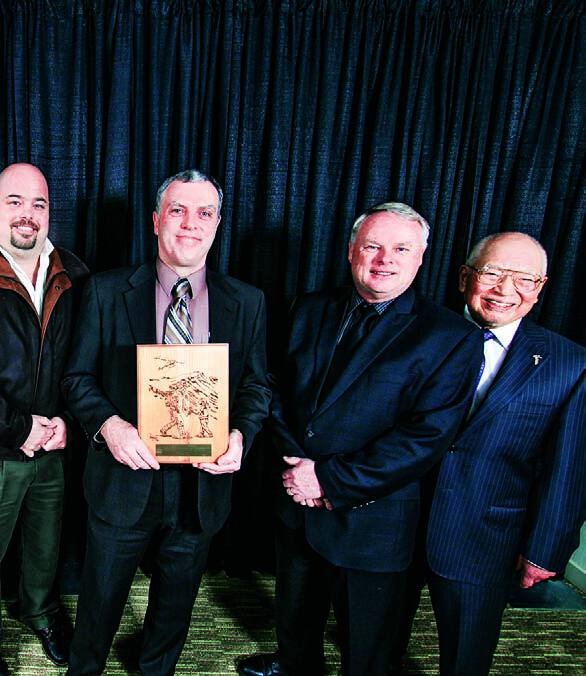
McLeod’s early recognition of the effect of acid rock drainage (ARD) on the physical environment and social sustainability of a mine, combined with his innate tendency towards practicality, resulted in merging the science of ARD into mine design. McLeod does not accept science blindly and his solutions and designs are neither overdone nor overly complicated.
McLeod was educated at UBC and the University of London, Imperial College. He began his career in British Columbia, contributing to the design of tailings dams at the Lornex (now Highland Valley Copper), Brenda, Afton and Snip mines. His first major international mining project was Ok Tedi in Papua New Guinea, where he played an active role in designing a number of options for tailings storage and ultimately developed a compromise dredging solution. In the 1990s, Harvey went on to practice in Peru where he was a pioneer in bringing modern tailings management concepts to that country.
McLeod is gregarious and likeable, yet principled and a vigorous defender of his professional standards and judgments. He has led environmental impact assessments and risk assessments, and designed tailings, mine waste and water solutions for some of the world’s most significant and challenging projects both domestically and internationally, including Morrison, Kemess, KSM, Oyu Tolgoi, Tampakan, Escondida and Antamina.
McLeod is currently the chair of the tailings committee of the International Commission on Large Dams, and has been the Canadian representative on this committee for the past 12 years. AME BC celebrates the achievements of Harvey McLeod and his commitment to social and environmental responsibility related to mine design.
Gold Pan Award
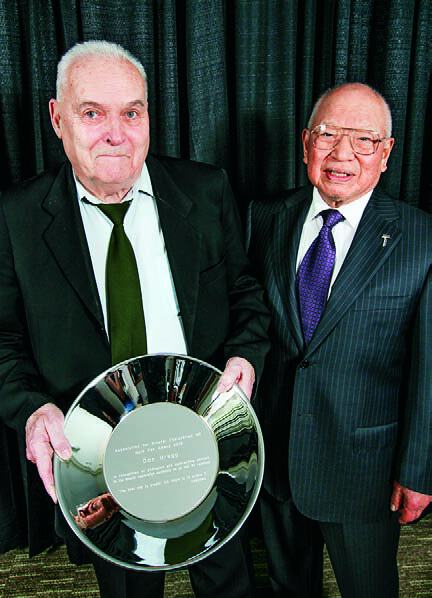
Exceptional Meritorious Service to the Mineral Exploration Community through the Association for Mineral Exploration British Columbia
Recipient: Don Bragg
Don Bragg has been an active prospector since 1956, working for both major and junior mining companies, and has been a self-employed prospector, contractor and camp manager since 1964. Bragg spent three years at UBC in the honours geology program, and was later an assistant handson teacher of field geochemistry for nine years with the government prospecting school under Stan Hoffman. Bragg has been affiliated with AME BC since 1962. His goal when he first joined was to stay current with what was happening with the industry, and he has since been very active, having served on many committees and the board of directors. Bragg was first elected to the board in 1976.
Bragg has been referred to as “the bedrock of the industry” for his passion for prospecting and his advocacy on behalf of the mineral exploration industry.
Special Tribute to ‘Lyn Anglin
On April 12, 2005, the government of British Columbia granted $25 million to create an industry-led, not-for-profit, applied geoscience organization. This financial commitment was certainly welcomed by industry, but the hard work of building a new delivery model for public geoscience from the ground up was about to begin. This new organization had to deliver programs over large areas of the province, generate data that would excite broad interest, and accomplish all of this in a collaborative manner to complement existing geoscience in government and elsewhere. Over the next eight months, Dr. Rob Stevens of BCIT took on the responsibilities of interim executive director of Geoscience BC until Dr. ‘Lyn Anglin was hired as the organization’s first president and CEO in January 2006. Without question, the success of Geoscience BC can be traced to Anglin’s vision, relationship building and strategic leadership over the past eight years.
Geoscience BC works in partnership with industry, academia, government, First Nations and communities to fund applied geoscience projects with the objective of attracting mineral and oil and gas exploration to British Columbia. Anglin built a team that is flexible, responsive and entrepreneurial, and has operated with very low overhead. She also reached out to many people to attract the consulting and volunteer expertise needed to steer and deliver programs. Anglin’s unique contribution to the organization was not only her ability to engage communities and other non-governmental organizations in the design and delivery of geoscience programs, but to explain the significance and importance of geoscience to the public. This passion for outreach was recognized by Science World, where Anglin serves as a director. Her contributions to science were recognized in 2010 when she was awarded the Minerva Foundation Award for Women in Natural Resources.
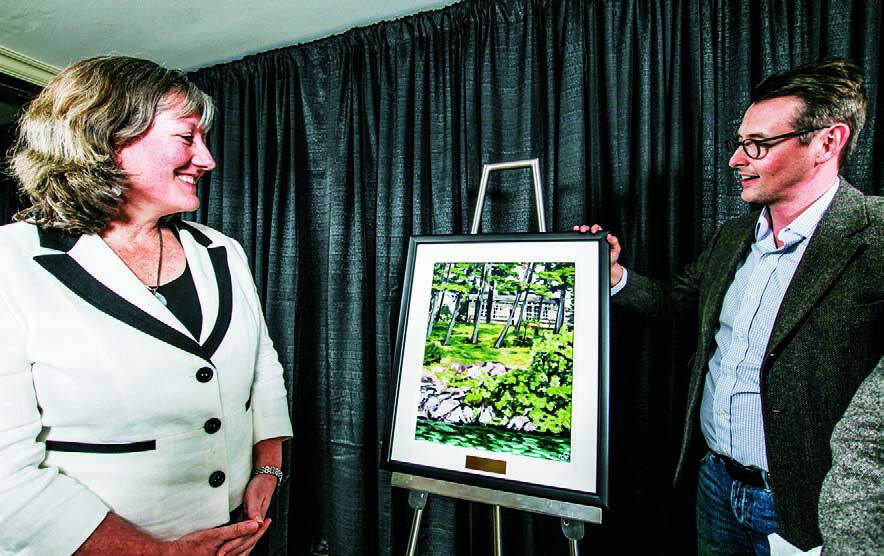
Anglin received her bachelor’s degree in geology from Queen’s University, a master’s in geology from Memorial University of Newfoundland, and her PhD from Carleton University. All of her academic research has been focused on mineral deposits. Prior to joining Geoscience BC, she was the acting director of the Pacific division of the Geological Survey of Canada. She has spent over 20 years managing exploration geoscience research projects in various areas across Canada.
Anglin is registered as a professional geologist with the Association of Profe ssiona l E ng i neer s a nd Geoscientists of B.C., and is a member of the boards of both the Resources North Association and AME BC. She is also a member of the steering committee of the School of Exploration and Mining at Northwest Community College in Smithers, serves on committees of the Prospectors & Developers Association of Canada and the Society of Economic Geologists, and is a former president of the Geological Association of Canada.
Outreach Education Fund
The AME BC Outreach Education Fund is a corporate endowment dedicated to increasing the public’s appreciation and understanding of B.C.’s mineral exploration industry through the advancement of public education and community programs. For 2013, $22,000 was available for distribution in the form of scholarships (excluding personal scholarships for post-secondary, geology-related education) and monetary funding, with a minimum of $1,500 per award for proposed public education and training programs focused on mineral exploration. The amount of funding for each application is based not only on the merits of the proposed project and funding requests, but also on the number of quality applications in a given year.
This award is open to all B.C.-focused projects relating to mineral exploration, with priority given to British Columbia residents, communities, associations and organizations.
In 2013, the Mineral Resources Education Program of BC (MineralsEd) was granted $11,800 for co-ordinating Kids & Rocks hands-on classroom workshops for students in kindergarten to Grade 3 in Lower Mainland schools.
The Britannia Mine Museum was granted $10,000 to support the ongoing development of its education/school program with the main focus on programs related to earth sciences. More specifically, the funding was allocated to the design and development of the Core Explore exhibit.

